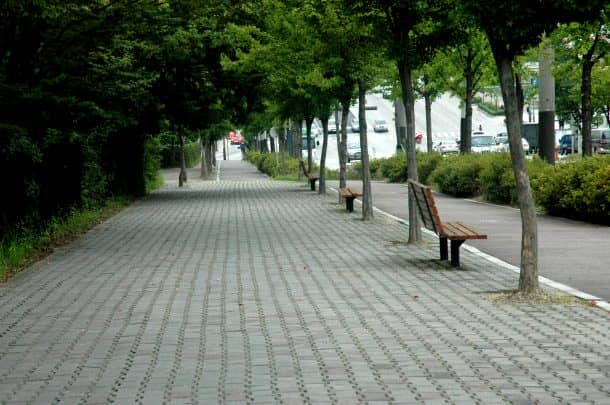Before the advent of the sidewalk, i.e. in the early 19th century, pedestrians on the road had to walk their way through animals, horse-drawn carts, carriages, wagons, and street cars while in danger of being mowed down or trampled. Adding to that misery was the gross horse dung and human urine that flowed like the river on the roads, making the pedestrians put their lives and health in danger every time they stepped out of their houses.
And while today we might not appreciate something as trivial as a sidewalk, the above narration should instill some value of it in your mind. So, why did no one ever think of resolving this horrendous situation until the 19th century? The story begins around 2000 BCE in Anatolia (now Turkey) where the first sidewalks were discovered. And both the ancient Greek and Roman cities also have evidence of roadside pedestrian footpaths. The Roman text also refers to semita, which is their terminology for sidewalks. But the demise of the Roman empire in the 5th century CE saw the beginning of a dark era in the Europe, which included the lack of sidewalks.

Although sidewalks did make a comeback after the Great Fire of London in 1666, they were still a rarity in Europe and only a handful of exclusive streets in Paris had limestone trottoirs which worked as sidewalks to fend off traffic.
The real revival and popularity of the sidewalk can be traced back to the work of Georges-Eugene Haussmann, who was the genius behind the revival and reconstruction of Paris in the 1850s and 1860s. During the era of Napoleon III, Haussmann had the ultimate power and resources over the redesign of the city. It was during this age that the cramped, dark streets of medieval Paris were turned into the famous and luxurious boulevards that we praise and admire today. These boulevards were adorned with sidewalks “lined with benches, lush with trees,” as quoted by Marshall Berman in his book All that is Solid Melts Into Air: The Experience of Modernity.

So the Parisian bourgeoisie can be crowned for transforming the streets of Paris into a place that changed the perception of exuberant urban life. But the invention was also inspired by the pressing need of public health and an attempt to create a healthy city where traffic, fresh air, and people could freely move about on artery-like roadways. It was this time that the concept of pedestrian and vehicle separation was devised, along with inventing the sewer and water systems to cut down the liquid slime floating on the streets.
Although Haussmann was eventually fired by Napoleon III in 1870 on the charge of increasing city’s municipal debt levels 15-folds, his design had huge influence on urban planners around the globe, and the ideas were implemented in Vienna, Barcelona, Chicago and Washington, DC. And soon enough, almost all of the urban cities across the globe took the idea of transforming their city streets into spaces safe for pedestrian locomotion as well as a place for leisure and consumption, adding to the quality and luxury of the urban life.


